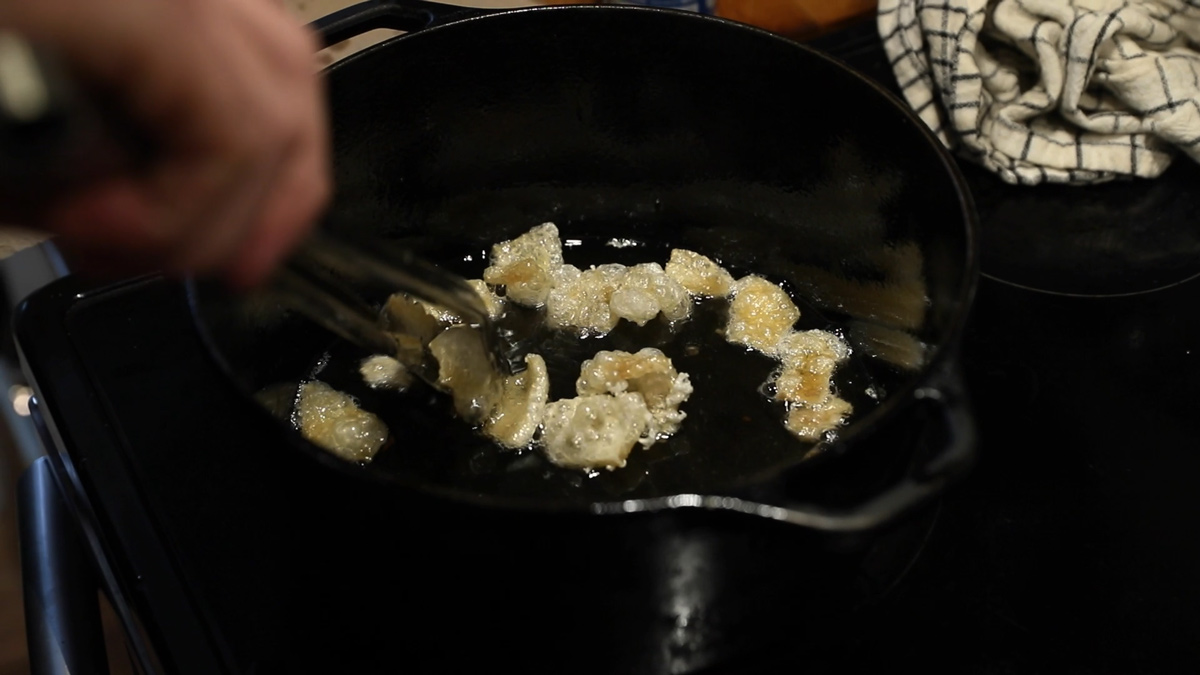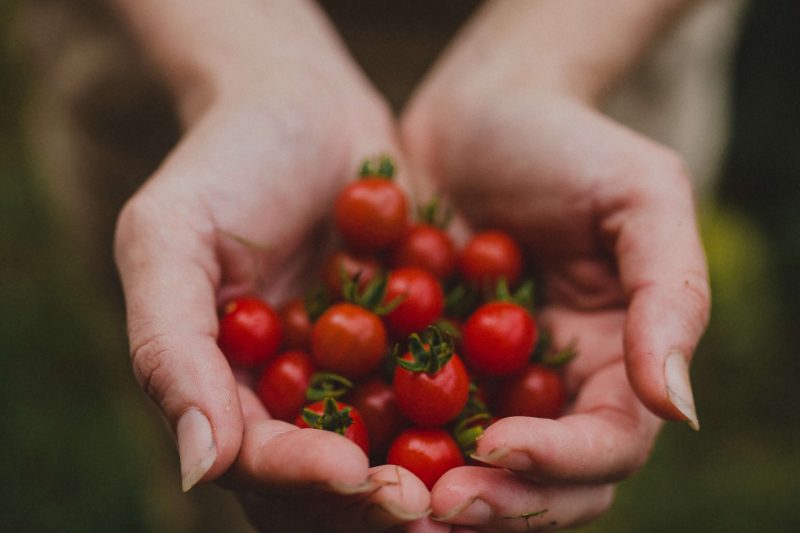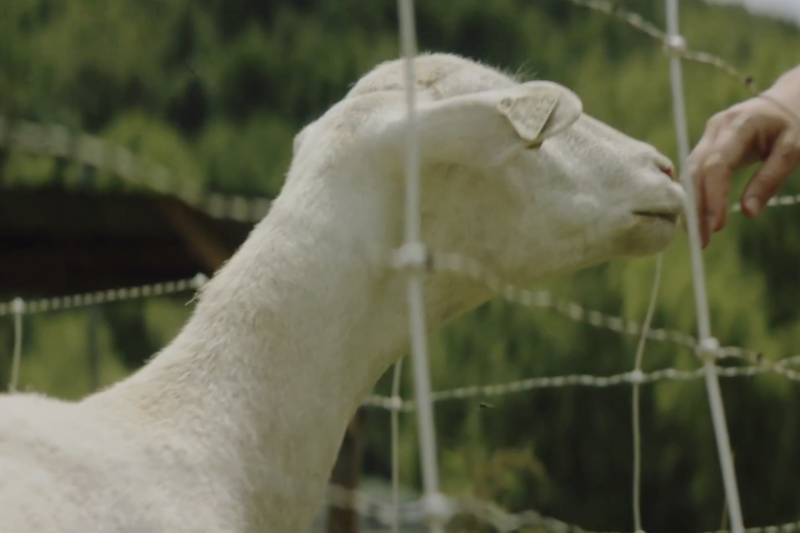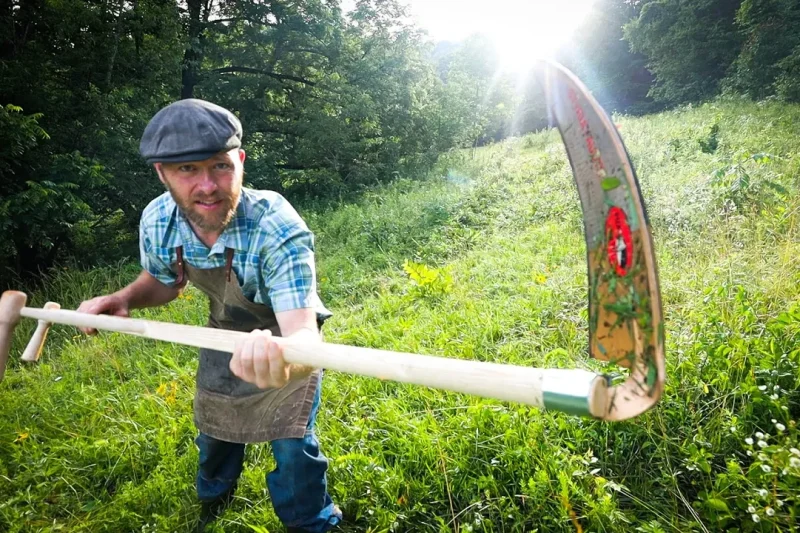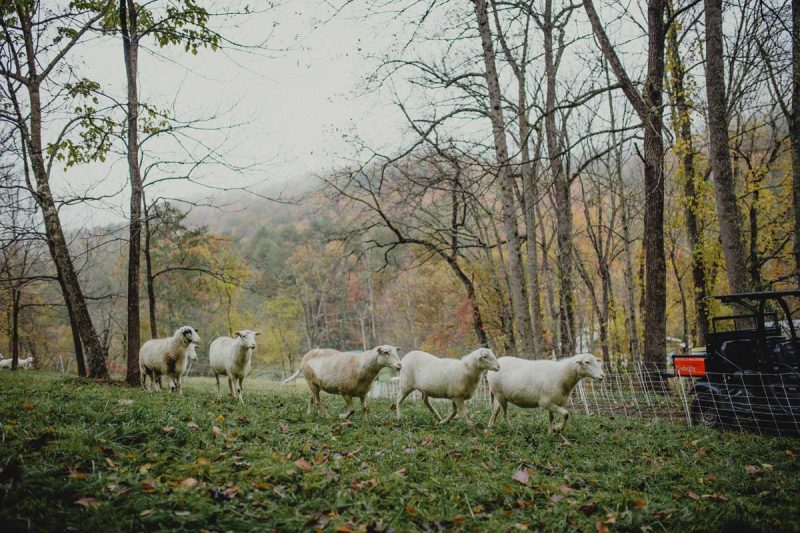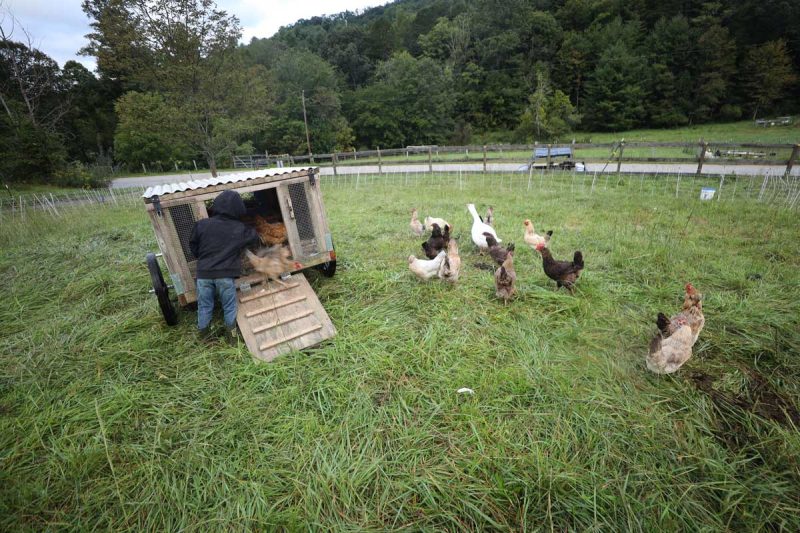Why I Love This Recipe
Being on the carnivore diet, I miss having a salty, crunchy treat. These pork rind chips are the perfect solution to fulfill that craving!
They’re fried goodness and a really good alternative to a corn chip. If you’re carbohydrate sensitive like I am and you need a lot of protein, imagine getting rid of the corn chip and using these pork rinds instead!
Use pork rind chips for dipping in salsa, guacamole, pimento cheese, or using them in nachos or instead of a taco shell (you can cut the skins however big or small you want).
Sprinkle with some Redmond Real Salt, or a dash of cinnamon and maple sugar and you have a savory or sweet treat anytime you want.
Be sure to check out my tip below for having pork rind chips “on demand”!
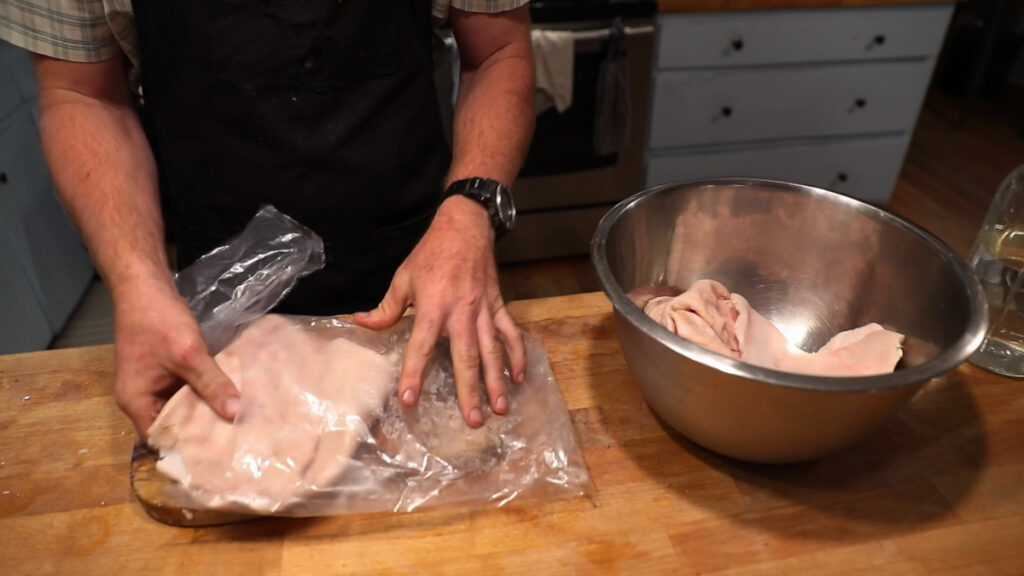
What are pork rind chips made of?
You may be wondering what pork rind chips are, and what they’re made of. Pork rinds are just pig skins fried in lard (or another cooking oil).
When prepared correctly, they puff up into a crunchy snack.
Abundance Plus
If you’d like to see a full video tutorial for making and cooking pork rinds, you can sign up for a FREE seven-day trial of Abundance Plus. Anyone who signs up for A+ will also get exclusive discounts to Premier1, New Country Organics (where we get our organic alfalfa feed pellets), McMurray Hatchery, Johnny’s Selected Seeds, Meadow Creature and many more.
There’s so much value, and the savings you can receive will more than pay for your membership. Be sure to check it out!
Are pork rind chips healthy?
Most people don’t think pork rinds are healthy, and when you’re talking about the bags of pork rinds from the grocery store, you’re right! They’re no healthier than a regular potato chip or corn chip fried in questionable oils.
But homemade pork rinds are a different story. When cooked up the right way (trust me, I’ve cooked them up the wrong way, too), they’re an extremely healthy snack, and they fit great into a carnivore or keto diet.

Are pork rinds healthier than corn chips?
This answer really depends on the chip and the person eating them. Some people have corn or flour allergies or should avoid corn and flour for dietary reasons (like myself). So for those people yes, pork rinds are healthier than a tortilla chip.
These are so good even the baby loves them! Now let’s get cooking with my “Burn It Up Cooking Show”…

Supplies
- Sharp Knife – Your knife has got to be sharp. The closer you can cut to the skin the better your pork rinds are going to be.
- Cutting Board – This is a messy job, be sure to use a cutting board.
- Large Pot – The pork skins have to be boiled before preparing, so a large pot is needed for this initial step.
- Dehydrator – You may not know this, but pork rinds, before frying, have to be dehydrated. We love our Excalibur dehydrator and it works great for this step. You can alternatively use an oven set to the lowest temperature.
- Cast Iron Skillet – A nice deep skillet for frying the pork rinds, cast iron is optional.

Ingredients
- Pork Skin – If you don’t have skin from your own butchered hogs, you can usually pick some up from a local butcher. Be sure to request the skins from the butcher when getting your hog processed. They usually don’t give you the skins unless requested.
- Lard – We use lard for frying the pork rinds. Another quality cooking oil will work as well. If you want to render your own lard, check out my video tutorial that goes along with this homemade pork rinds tutorial inside Abundance Plus.
- Salt – What’s a crunchy chip without salt? Good old Redmond Real Salt is what we use in our house.
How to Make Pork Rind Chips

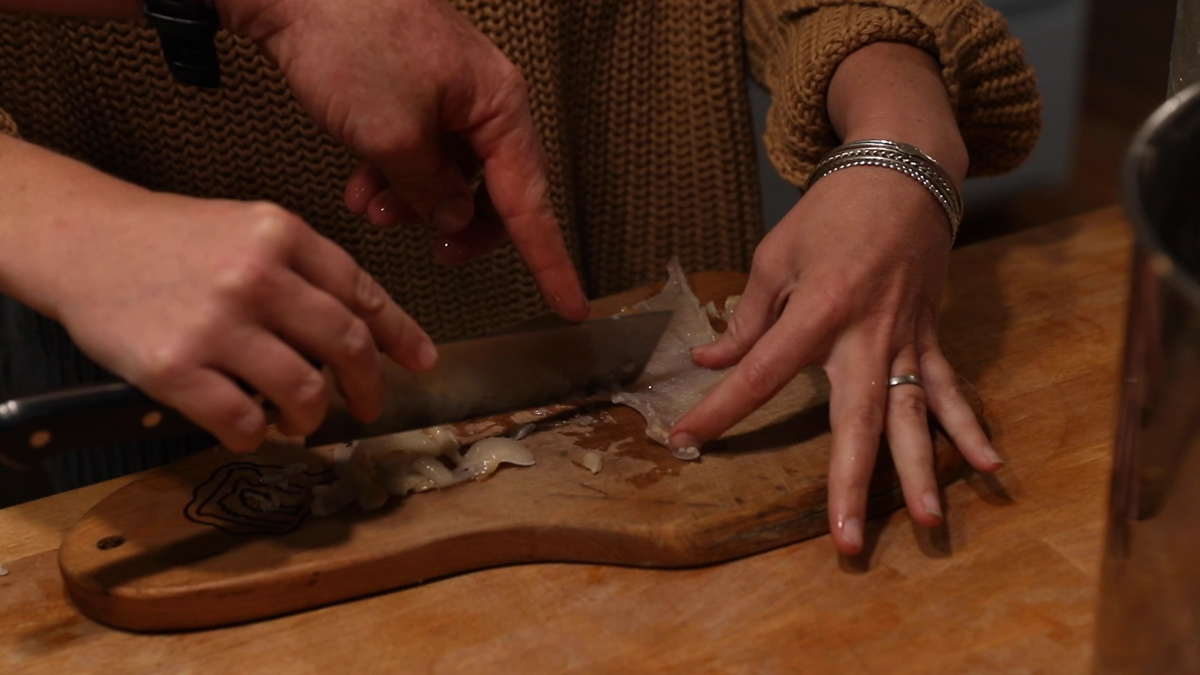
Prepare the Skins
- The first step in making pork rinds is softening the skins. Make sure you’re working with thawed pork skins.
- Take the pork skins and add them to a pot of boiling water.
- Boil for two hours.
- Drain water and cover the pork skins with cold water to cool them off.
- Remove pork skins and slice into manageable-sized pieces.
- With the skin side up, take your sharp knife and slice the fat away right up next to the skin. The goal is to remove as much fat as possible. Some fat is OK, but too much makes for a chewier pork rind.
Pro Tip: Save your pork fat and render it down for lard. - Slice the pork skins into any size you’d like. Many recipes will call for 1/2 inch pieces, but they make very small chips, so I like to make some larger pieces that are a couple inches wide.

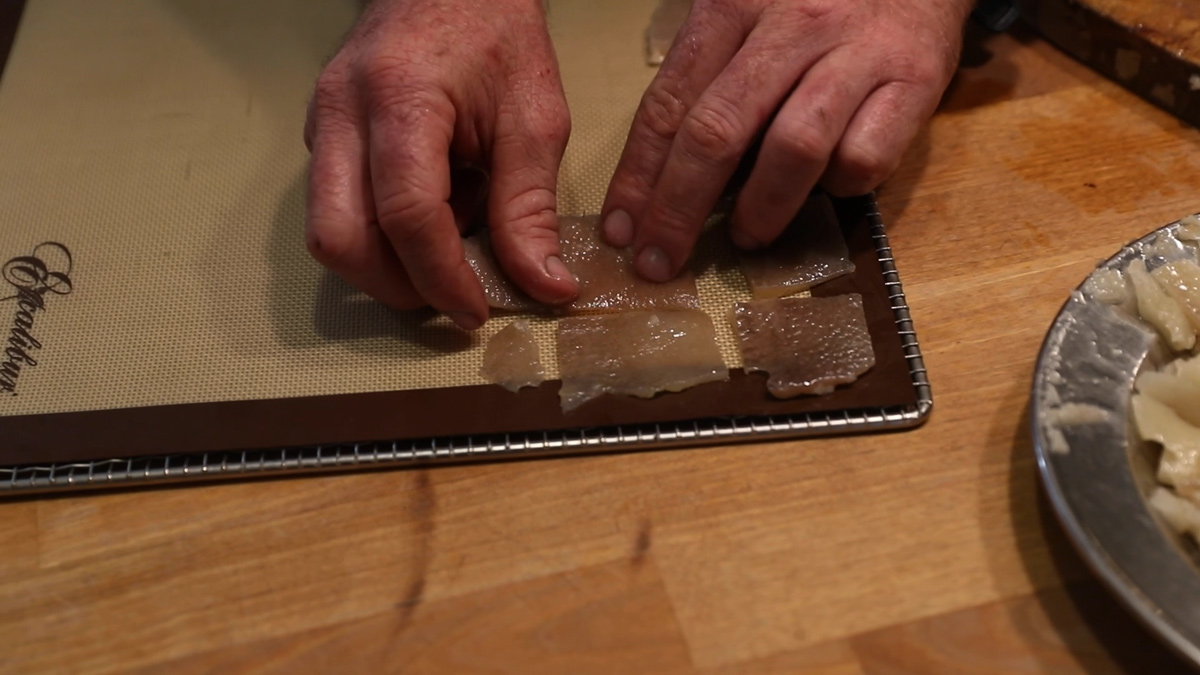
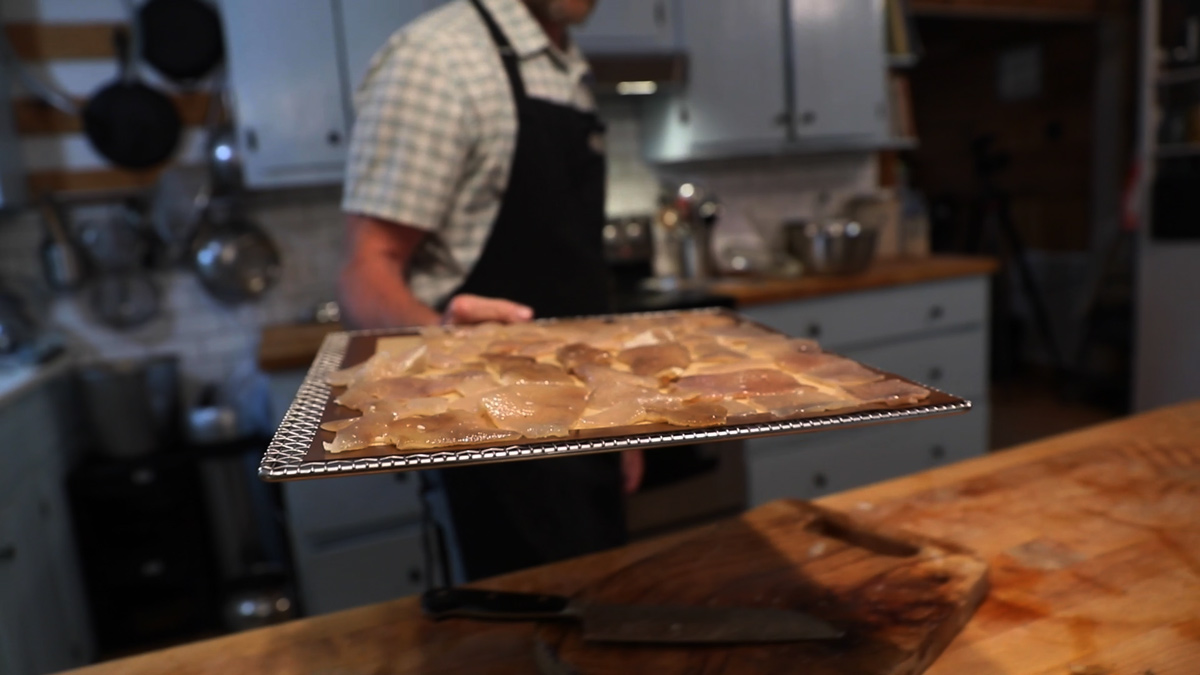
Dehydrate the Skins
- Place your prepared pork skins onto a dehydrator rack. We like to use the stainless steel Excalibur racks lined with a Paraflex dehydrator sheet. It doesn’t matter if the pork skins are up or down, just arrange them out on the dehydrator tray.
- Dehydrate pork rinds at 165° F for 10-14 hours (depending on the size of your pork skins) until they’re rock hard.
Pro Tip: Store dehydrated pork skins in a zip-top freezer bag so you have “pork rinds on tap”.
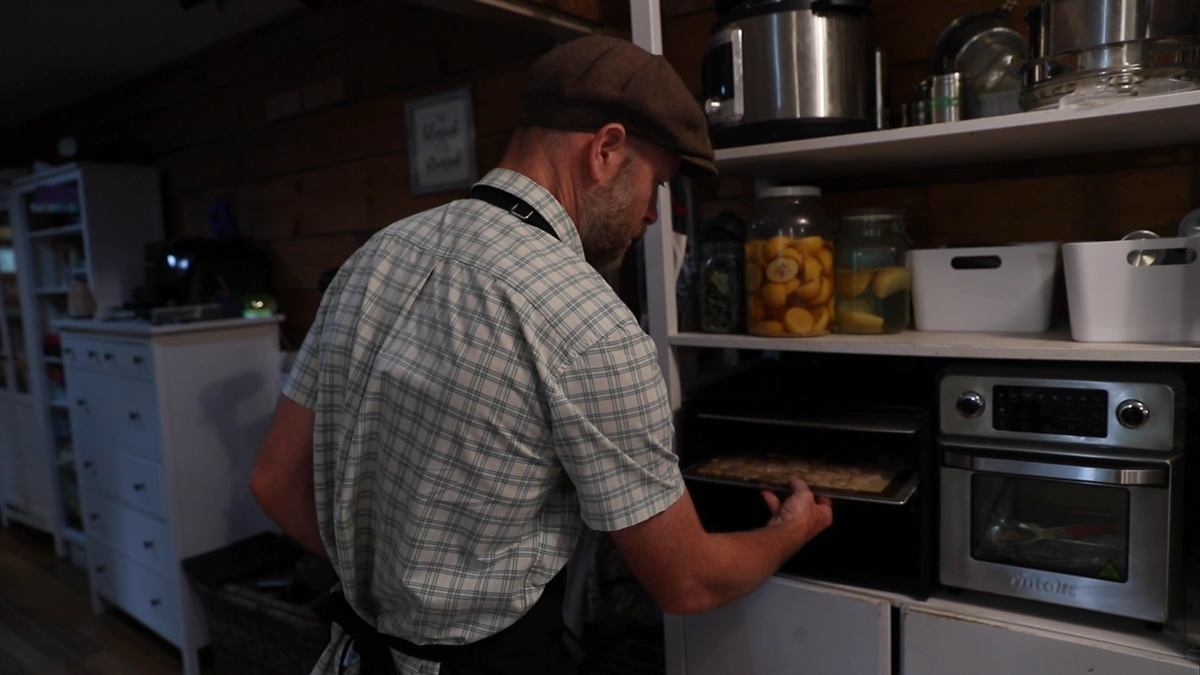
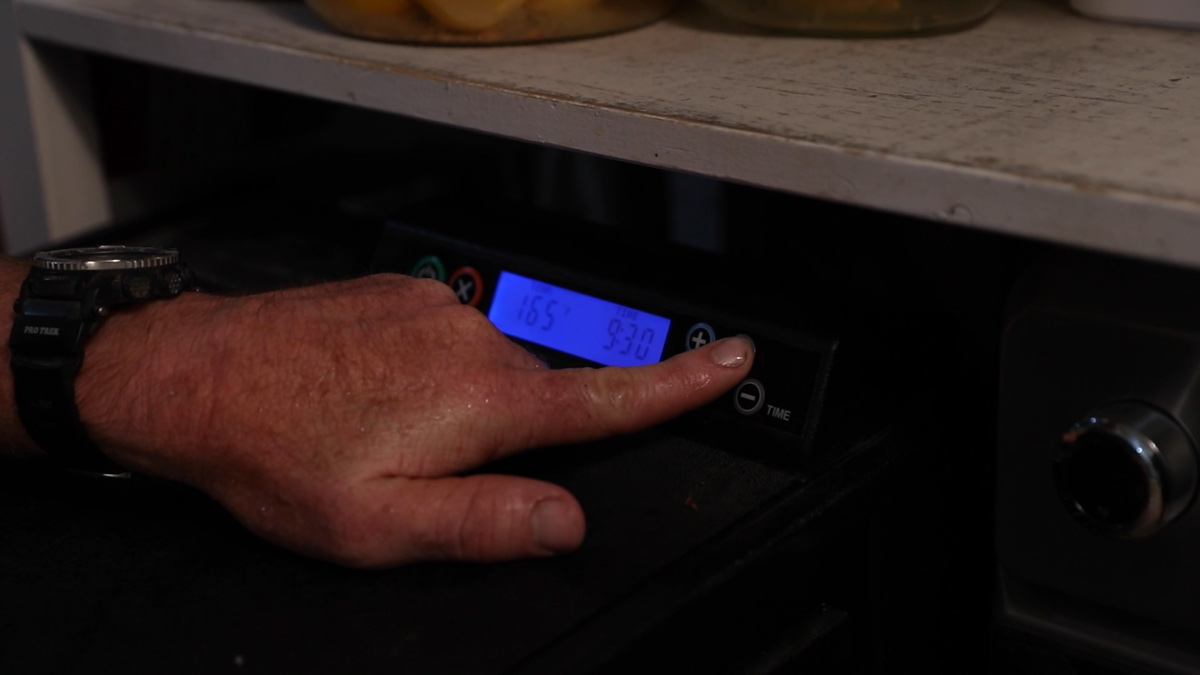
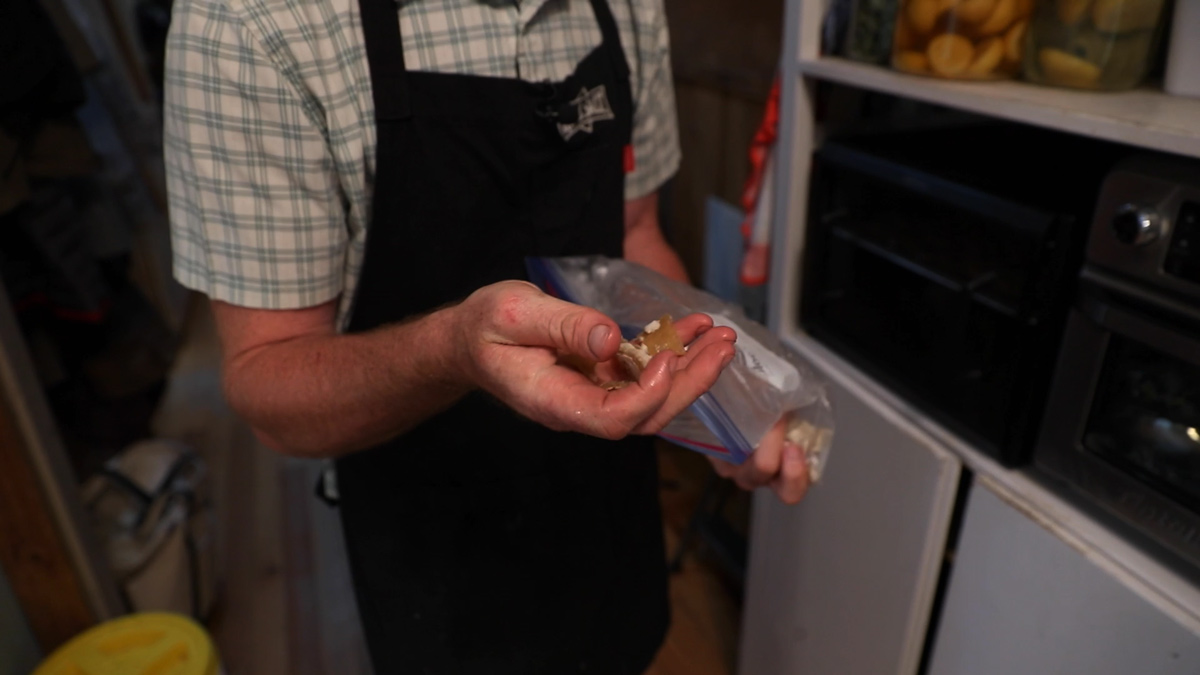
Fry Pork Rinds
- Heat a good amount of lard in a heavy-bottomed deep pan (I’m using a cast iron skillet) over medium-high heat. Bring the temperature up to 375-400° F. If you cook them on too low of heat they’ll get chewy instead of crunchy and crispy.
- Add a single layer of dehydrated pork skins and stir continually as they start to puff up.
- Flip over any skins that need to cook on the other side.
- Remove them to a paper towel-lined plate and salt immediately.
- Add a paper towel between each layer of pork rinds so you don’t oversalt each batch.
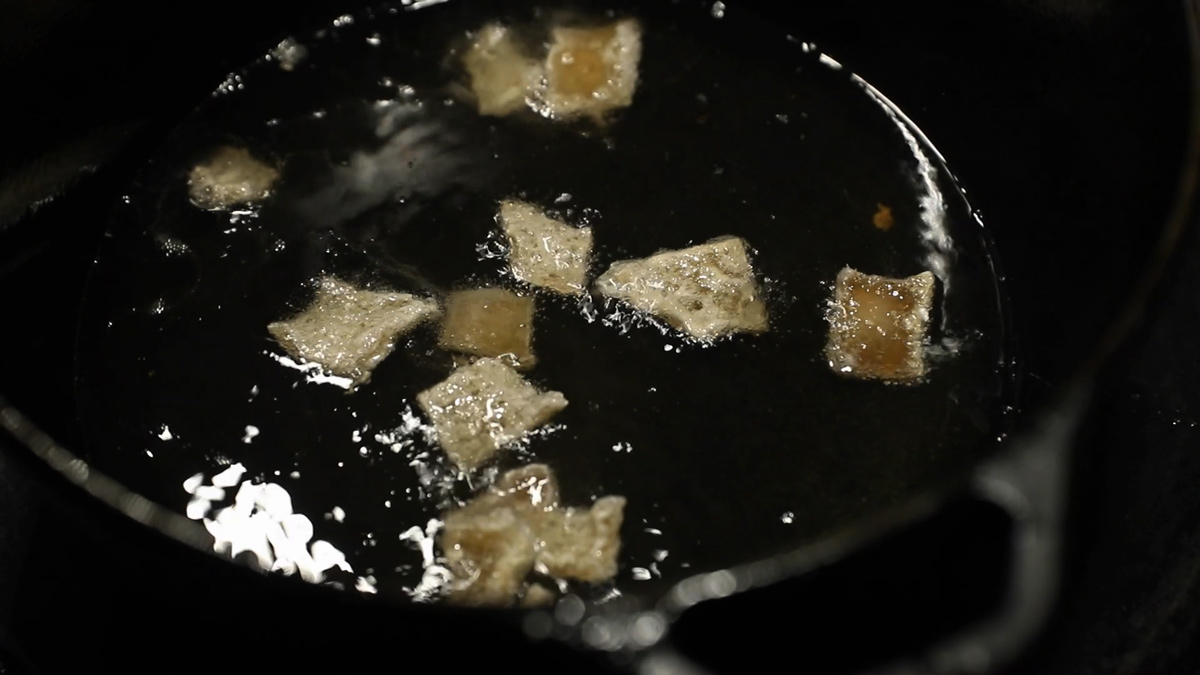

For a sweet treat, sprinkle the pork rinds with some cinnamon and maple sugar and it tastes like a churro!
Now that you’ve made homemade pork rinds, raising and butchering your own hogs is the next step! Check out Abundance Plus for exclusive master classes on raising pigs.

